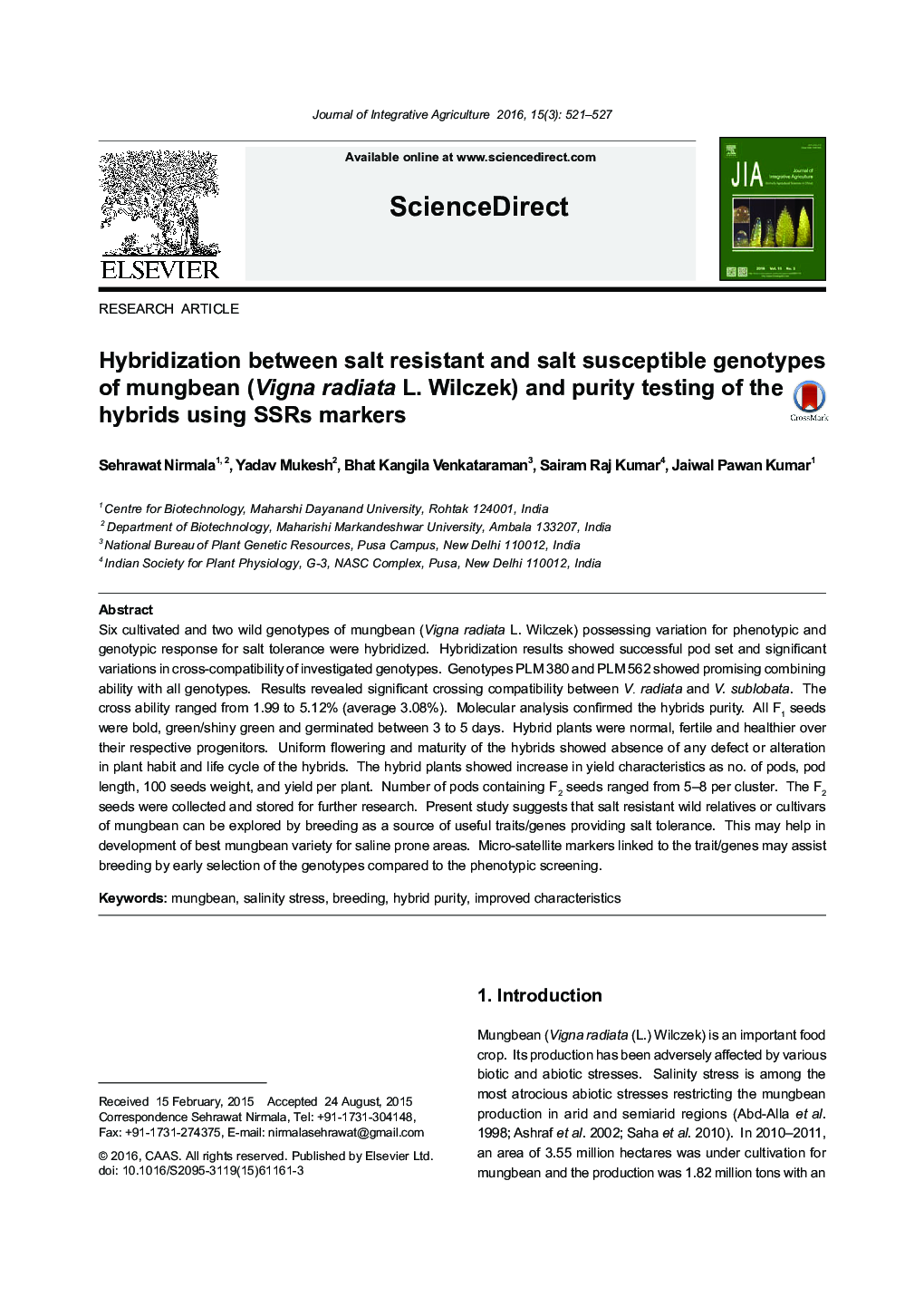| Article ID | Journal | Published Year | Pages | File Type |
|---|---|---|---|---|
| 10180019 | Journal of Integrative Agriculture | 2016 | 7 Pages |
Abstract
Six cultivated and two wild genotypes of mungbean (Vigna radiata L. Wilczek) possessing variation for phenotypic and genotypic response for salt tolerance were hybridized. Hybridization results showed successful pod set and significant variations in cross-compatibility of investigated genotypes. Genotypes PLM 380 and PLM 562 showed promising combining ability with all genotypes. Results revealed significant crossing compatibility between V. radiata and V. sublobata. The cross ability ranged from 1.99 to 5.12% (average 3.08%). Molecular analysis confirmed the hybrids purity. All F1 seeds were bold, green/shiny green and germinated between 3 to 5 days. Hybrid plants were normal, fertile and healthier over their respective progenitors. Uniform flowering and maturity of the hybrids showed absence of any defect or alteration in plant habit and life cycle of the hybrids. The hybrid plants showed increase in yield characteristics as no. of pods, pod length, 100 seeds weight, and yield per plant. Number of pods containing F2 seeds ranged from 5-8 per cluster. The F2 seeds were collected and stored for further research. Present study suggests that salt resistant wild relatives or cultivars of mungbean can be explored by breeding as a source of useful traits/genes providing salt tolerance. This may help in development of best mungbean variety for saline prone areas. Micro-satellite markers linked to the trait/genes may assist breeding by early selection of the genotypes compared to the phenotypic screening.
Keywords
Related Topics
Life Sciences
Agricultural and Biological Sciences
Agricultural and Biological Sciences (General)
Authors
Sehrawat Nirmala, Yadav Mukesh, Bhat Kangila Venkataraman, Sairam Raj Kumar, Jaiwal Pawan Kumar,
